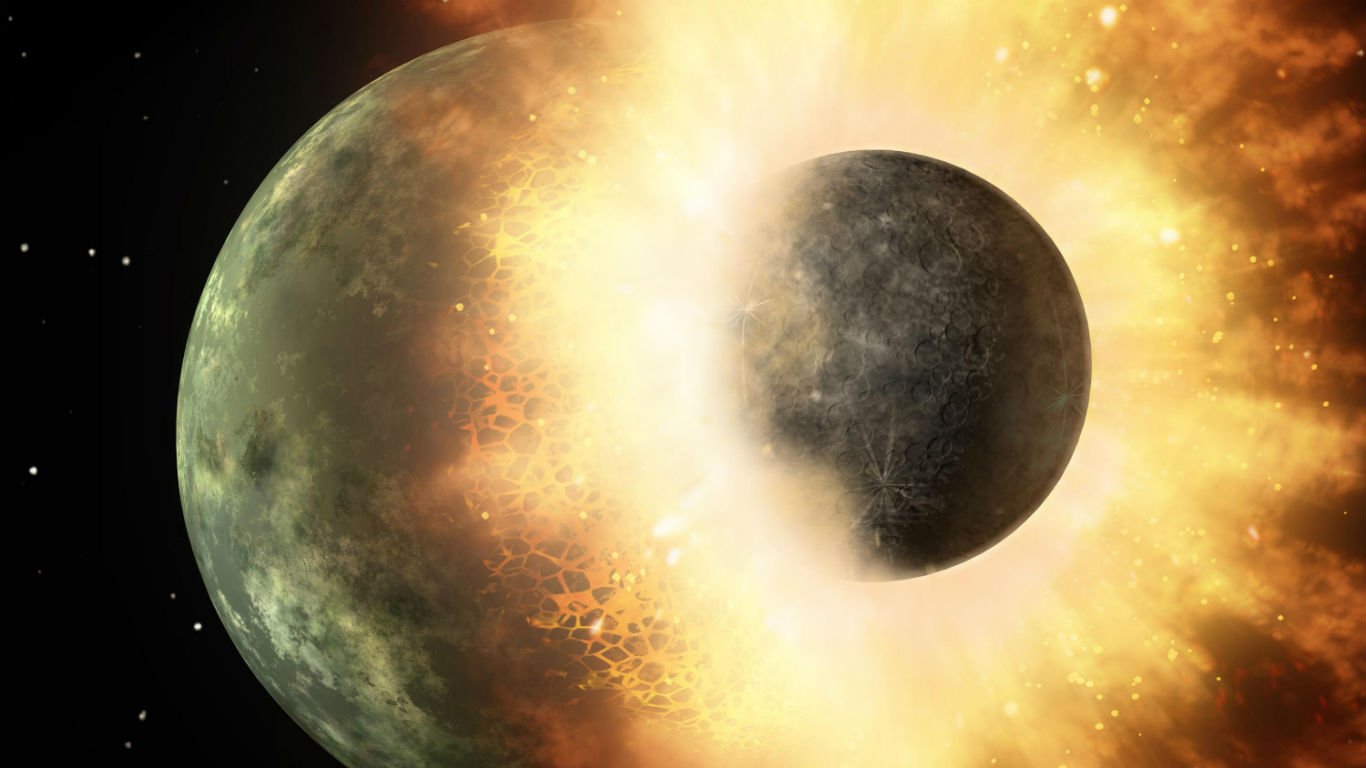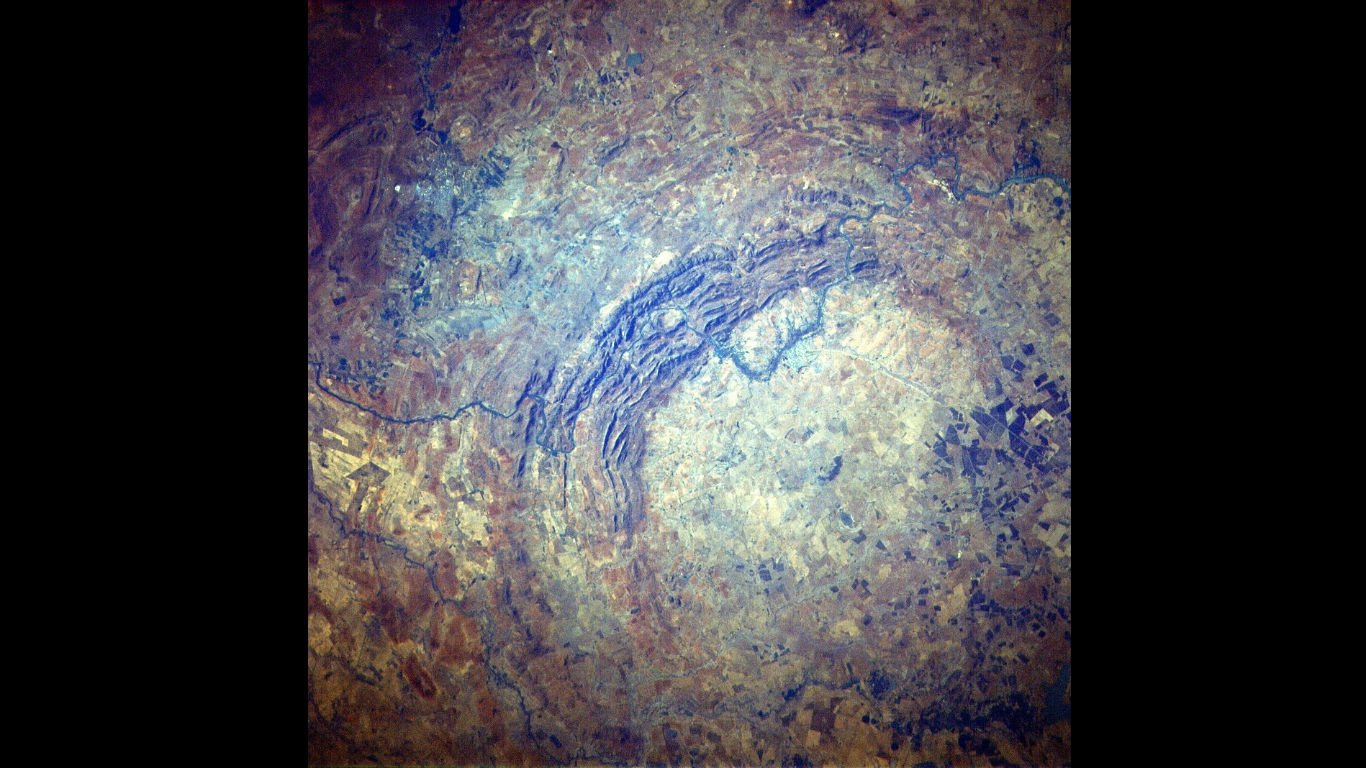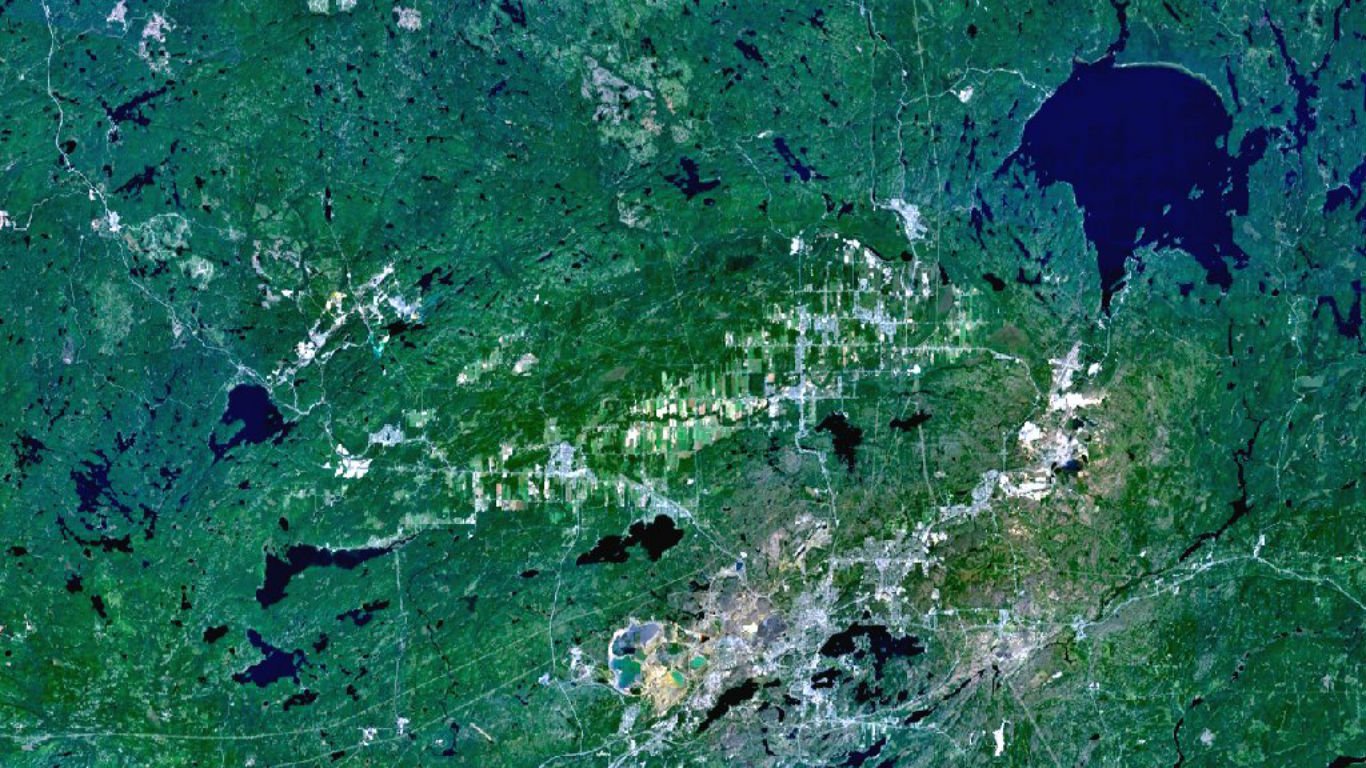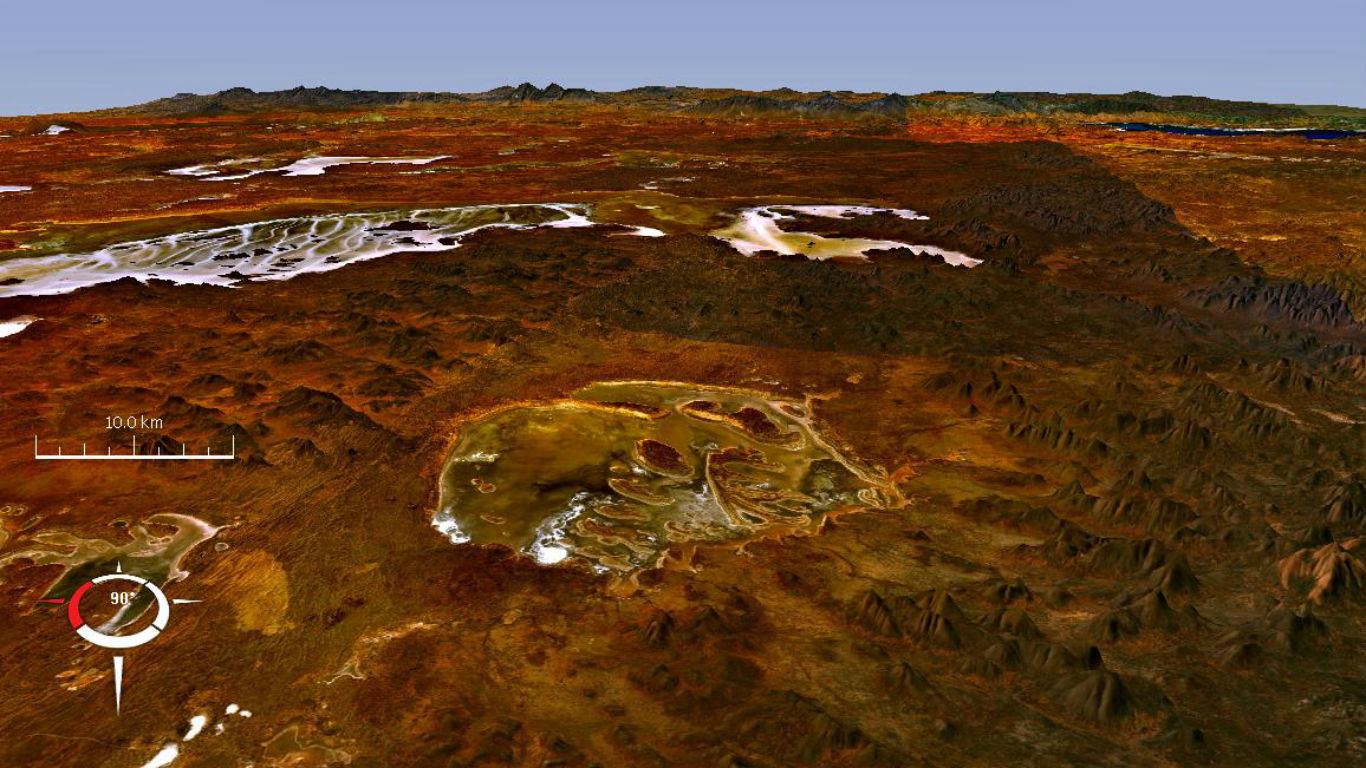
1. Collision with Theia
> Era: 4.5 billion years ago
According to the prevailing theory on the Moon’s origin, roughly 4.5 billion years ago, the relatively young Earth — just 100 million years old at that point — collided with a Mars-sized planet-like object called Theia. The head-on collision ejected tons of molten material into the Earth’s atmosphere, which for a time after is believed to have been made up of plasma-metal vapor. The debris eventually congealed and formed Earth’s moon.
2. The Great Oxidation Event
> Era: 2.5 billion years ago
It is believed that between 2.5 billion and 2.3 billion years ago, life on Earth was largely confined to the oceans. Around that time, a massive bloom of an algae-like bacteria called cyanobacteria appeared, saturating the Earth in oxygen. Because most bacteria at the time did not metabolize oxygen, many bacteria species died out. The abundance of oxygen, in a chemical reaction, helped reduce the levels of methane in the atmosphere, cooling the Earth down significantly.

3. Vredefort impact
> Era: 2 billion years ago
Approximately 2 billion years ago, an asteroid somewhere between 3 miles and 6 miles in diameter struck the Earth in what is now South Africa at an estimated 12 miles per second. The resulting crater is 118 miles in diameter and was originally a magma lake formed from the energy of the collision. An impact of this size would certainly have caused major changes in the composition of the Earth’s atmosphere.

4. Sudbury Basin impact
> Era: 1.8 billion years ago
The Sudbury Basin in Ontario, Canada, is one of the three largest impact craters on Earth, measuring 18 miles by 37 miles. Unlike some other major impacts, scientists believe the basin was formed by a comet rather than an asteroid. The impact was so intense that it formed a hole in the crust of the Earth, which subsequently filled with magma.

5. Acraman impact
> Era: 580 million years ago
Roughly 56 miles in diameter, the Acraman crater in South Australia is one of the largest on Earth. Approximately 580 million years ago, an asteroid with an estimated diameter of 2.9 miles hit the site. The effects of the impact on the atmosphere, coupled with a period of glaciation, may have had a substantial impact on the course of evolution at the time.






